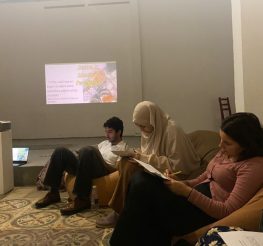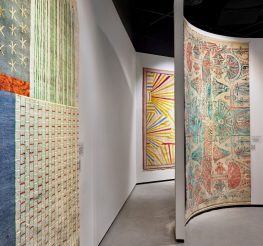Champollion Palace: The False, the True, and the Beautiful
Antonio Lasciac Cairo's Palaces Champollion Palace Said Halim Pasha
Nada Medhat
Holding one of the most interesting stories of Cairo’s palaces, little is actually known about the true story of the Champollion Palace. It has been encased in mystery with a thick texture of mist. Even the name it’s known by is not its actual name!
Holding one of the most interesting stories of Cairo’s palaces, little is known about the true story of the Champollion Palace. It has been encased in mystery with a thick texture of mist. Even the name it’s known by is not its actual name!
Though it’s currently not open for visitors, this will hopefully be changing soon—the Champollion Palace is too mesmerising and haunting not to be held in appropriate esteem. Until then, let’s delve a little into the fascinating story of the beautiful monument!
History of the Palace
The false name the palace has adopted actually belongs to the street it’s located in, as the street itself was named after the orientalist and philologist Jean-François Champollion, best known for deciphering the Rosetta Stone. So when people hear the name “Champollion Palace”, they mistakingly assume the palace was his.
In reality, the palace was built by Said Halim Pasha, the grandson of Muhammad Ali, in 1895 and gifted to his wife. He hired the Italian architect, Antonio Lasciac, who was both the brains and brawn behind lots of Egypt’s stunning architecture, like Alexandria’s Montaza Palace, to design and build it for him. It took the Italian architect around four years to wrap up his work on the palace.
Strangely enough, the woman whom the palace was built for refused to live in it, preferring another of Cairo’s palaces, which only added to the myths surrounding it later on.
In 1914, around the start of World War I, Said Halim Pasha was deprived of his powers due to his opposition to letting Turkey enter the war, and his general clashes with British policy, right after Britain annexed Egypt that same year. Subsequently, he was removed from his position as prime minister, and his palace was confiscated. The prince was assassinated in 1921 in Rome.
Then in 1934, King Fuad I of Egypt ordered the conversion of the palace into a school under the Ministry of Education, calling it “The Nasarian School”. It remained a school until 1952 when its grounds were used to train soldiers during the revolution. After the revolution, the palace was closed and abandoned. As it still is to this day.
Architecture
The palace was built on 4781 square metres in the Baroque style, prevalent in Europe during the Renaissance. It consists of the main hall with two floors, a cellar and two wings. The main facade of the palace is characterised by a wonderful architectural style with grandiose statues.
The first floor is essentially a huge foyer that extends to the entire length of the palace and ends with a double staircase that leads to the second floor. Both the first and second floors have six doors each, which open to large rooms. The large cellar consists of the maids’ rooms, a kitchen, storage rooms, and bathrooms. As for the two wings, they are basically dormitories with large rooms.
One of the unique characteristics of the palace can be seen in the ornaments and decorations that range from depictions of animals and plants to geometric shapes. The wooden windows are adorned with flowering arbours, structured into bows or shields. The lighting of the palace is also very distinct, as the lamps are placed right underneath the statues.
The palace has remained closed all of those years, but in 2000, the Ministry of Culture took control of it and announced its restoration plans. The Supreme Council of Antiquities submitted a joint proposal with the French Development Research Institute in Cairo to restore the palace to turn it into a museum that tells the history of Cairo. But unfortunately, the project was ignored, and for decades, the palace suffered from neglect and chaos. Additionally, stories about ghosts and the like inhabiting the palace spread like wildfire.
Our team at Cairo 360 hopes for the development and restoration of this incredible palace to turn it into a museum in the heart of our capital. And, of course, we’ll be the first to visit it!
* This article is a translation of an original article written on our sister platform, Cairo 360 in Arabic, written by Mohammed Talat.
recommended
 Restaurants
Restaurants
Where to Eat the Best Egyptian Meals: Top Restaurants for Egyptian Cuisine
Bebo Egyptian food +4 Arts & Culture
Arts & Culture



